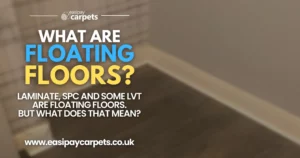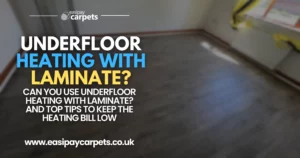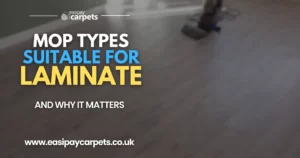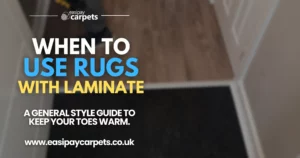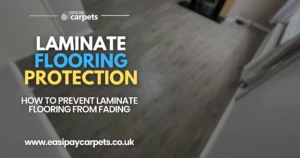
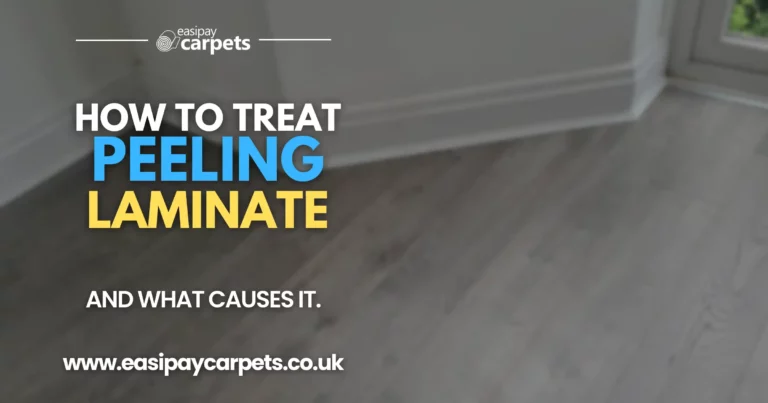
How To Deal With Peeling Laminate Flooring
Laminate flooring is a durable and affordable option that can enhance the look of any home. However, one common issue homeowners may face is peeling laminate. When the top layer of laminate flooring starts to peel, it not only affects the appearance of the floor but can also lead to further damage if not addressed promptly. If you’re wondering what to do if your laminate floor starts to peel, this guide will help you understand the causes of peeling, provide DIY repair solutions, and offer tips to prevent future peeling.
What Causes Laminate Floors to Peel?
Before diving into the repair methods, it’s important to understand what might be causing your laminate flooring to peel. Here are some common causes:
Moisture Damage:
- Description: Laminate flooring is not waterproof. Exposure to water or moisture can cause the top layer to separate and peel away from the core.
- Impact: Water damage often leads to peeling, swelling, and even warping of laminate flooring, particularly in areas like kitchens, bathrooms, or basements.
Improper Installation:
- Description: Incorrect installation, such as failing to leave expansion gaps or using improper adhesives, can lead to laminate planks lifting and peeling.
- Impact: Poor installation can cause the laminate to shift or lift over time, resulting in peeling.
Low-Quality Laminate:
- Description: Cheaper laminate flooring often has a thinner wear layer that is more prone to peeling and damage.
- Impact: Low-quality laminates may peel or wear out faster, especially in high-traffic areas.
Excessive Wear and Tear:
- Description: Over time, heavy foot traffic, moving furniture, and general wear can cause the protective layer of laminate flooring to peel.
- Impact: Areas with high foot traffic or heavy furniture are more susceptible to peeling and damage.
Chemical Exposure:
- Description: Using harsh cleaning chemicals, such as bleach or ammonia-based cleaners, can break down the protective layer of laminate flooring.
- Impact: These chemicals can cause peeling, discoloration, and damage to the laminate surface.
How to Fix Peeling Laminate Flooring
Once you’ve identified the cause of the peeling, you can choose the most appropriate method to repair your laminate flooring. Here are some effective DIY solutions to fix peeling laminate floors:
1. Repair with Laminate Repair Paste
- Solution: Use a laminate repair paste or putty to fill in the peeling areas and restore the floor’s appearance.
- Steps:
- Clean the peeling area thoroughly with a damp cloth and allow it to dry completely.
- Apply a small amount of laminate repair paste or putty to the peeled area using a putty knife. Choose a colour that matches your laminate flooring.
- Smooth the paste with the putty knife to ensure an even finish. Remove any excess paste with a damp cloth.
- Allow the paste to dry according to the manufacturer’s instructions. Once dry, the floor should look smooth and even.
- Why It Works: Laminate repair paste blends seamlessly with the surrounding floor, covering the peeled areas and restoring the floor’s appearance.
2. Use Laminate Floor Sealant
- Solution: Apply a laminate floor sealant to the peeling edges to prevent further peeling and secure the top layer in place.
- Steps:
- Gently lift the peeling edges and clean underneath with a soft cloth to remove any dirt or debris.
- Apply a small amount of laminate floor sealant under the peeling edges using a small brush or applicator.
- Press the laminate edges down firmly and use a weight or heavy object to keep them in place while the sealant dries.
- Allow the sealant to dry completely before walking on the floor.
- Why It Works: Laminate floor sealant helps to bond the peeling edges back to the core, preventing further peeling and protecting against moisture.
3. Replace the Damaged Plank
- Solution: If the peeling is extensive or if multiple planks are affected, replacing the damaged laminate plank is the best option.
- Steps:
- Use a utility knife or circular saw to cut out the damaged plank. Be careful not to damage the surrounding planks or the subfloor.
- Remove the damaged plank and clean the area thoroughly.
- Prepare a replacement plank by trimming the tongue and groove edges to fit. Apply a small amount of wood glue to the edges.
- Insert the replacement plank into the opening and press down firmly to secure it in place.
- Allow the glue to dry completely before walking on the floor.
- Why It Works: Replacing the damaged plank provides a permanent solution to extensive peeling and ensures a seamless appearance.
4. Apply Heat to Reactivate Adhesive
- Solution: For small areas of peeling, apply heat to the affected area to reactivate the adhesive and secure the laminate back in place.
- Steps:
- Use a hairdryer or heat gun on a low setting to warm the peeling area gently. Be careful not to overheat and damage the laminate.
- Once the adhesive becomes tacky, press the peeling area down with a flat object or heavy book.
- Allow it to cool and set for several hours before walking on the floor.
- Why It Works: Heat can help to soften and reactivate the adhesive, allowing the laminate to reattach to the core.
5. Use Super Glue for Minor Peeling
- Solution: For small, localized peeling areas, apply a small amount of super glue to bond the peeling section back to the core.
- Steps:
- Lift the peeling edge slightly and apply a small amount of super glue underneath.
- Press down firmly and hold for several minutes until the glue sets.
- Wipe away any excess glue with a damp cloth and allow it to dry completely.
- Why It Works: Super glue provides a quick and effective solution for minor peeling and prevents it from spreading further.
Preventing Laminate Flooring from Peeling
Prevention is always better than repair. Here are some tips to help prevent your laminate flooring from peeling:
Control Moisture Levels:
Keep moisture levels in check by using rugs or mats near entryways, sinks, and other areas prone to water exposure. Wipe up spills immediately to prevent water from seeping into the laminate.Use Laminate-Safe Cleaners:
Clean your laminate flooring with cleaners specifically designed for laminate surfaces. Avoid harsh chemicals like bleach, ammonia, or wax-based products that can damage the protective layer.Maintain Proper Installation:
Ensure that laminate flooring is installed correctly with adequate expansion gaps and proper underlayment. This prevents movement and reduces the risk of peeling.Avoid Dragging Heavy Furniture:
Use furniture pads or sliders to move heavy furniture across laminate floors. Dragging furniture can scratch or peel the top layer.Monitor Indoor Humidity Levels:
Maintain an indoor humidity level between 35-65% to prevent laminate floors from expanding, contracting, or peeling.Invest in High-Quality Laminate Flooring:
Choose high-quality laminate flooring with a thicker wear layer that is more resistant to peeling and damage.
Conclusion
Peeling laminate flooring can be a frustrating issue, but with the right knowledge and tools, it is often fixable. Understanding what to do if your laminate floor starts to peel, identifying the causes, and following effective repair methods can help restore your floor’s appearance and prevent further damage. By maintaining proper care and taking preventive measures, you can keep your laminate flooring looking great for years to come.
Easipay Carpets can help you get brand new flooring without the high up-front cost – by simply letting you spread the cost of the flooring over time instead. There’s no interest on our plans so you aren’t spending a penny more than you would buying it outright and we include underlay, door trims, carpet grippers and laminate beading for free. Prices start from just £10 per week!
It starts with a free home appointment and quote, to get booked in at a time that suits you, tap the “Get Started” button below and fill out the contact form!
Still Got Questions? Here's 10 FAQs!
You can fix peeling laminate flooring by using laminate repair paste, applying sealant, replacing the damaged plank, or using heat to reactivate adhesive.
Common causes of peeling include moisture damage, improper installation, low-quality laminate, excessive wear and tear, and exposure to harsh chemicals.
Yes, super glue or laminate floor sealant can be used for minor peeling areas to bond the top layer back to the core.
If the peeling is extensive or affects multiple planks, it is best to replace the damaged plank for a permanent fix.
Prevent peeling by controlling moisture levels, using laminate-safe cleaners, ensuring proper installation, and avoiding dragging heavy furniture.
Yes, applying heat with a hairdryer or heat gun can reactivate the adhesive and secure small peeling areas.
Yes, lower-quality laminates often have a thinner wear layer, making them more susceptible to peeling and damage.
Yes, moisture is a common cause of peeling laminate flooring. Water exposure can cause the top layer to separate from the core.
Yes, once the peeling is fixed, you can clean and polish the laminate with a laminate-specific cleaner to restore its shine.
Look for a laminate floor sealant that is transparent, waterproof, and specifically designed for laminate surfaces to ensure a strong bond and protection.
